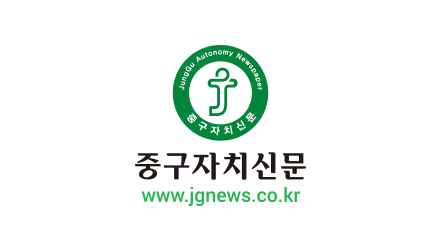Inflammation of the gallbladder that stores bile produced by the liver is called cholecystitis. According to data from the Health Insurance Review and Assessment Service, the number of cholecystitis patients in 2019 was 56,000, a 31% increase compared to 42,000 in 2016. Learn about cholecystitis as Professor Yong-Chan Shin of Surgery at Ilsan Paik Hospital.
Q. What is cholecystitis?
“Cholecystitis is a disease caused by a secondary bacterial infection following obstruction of the gallbladder duct. The most common symptom of acute cholecystitis is pain in the upper right or upper right stomach or in the Myeongchi area that occurs suddenly. Patients with acute cholecystitis usually experience biliary colic, which occurs suddenly at a certain time in the past and disappears naturally after 1 to 4 hours. In the case of acute cholecystitis, the pain does not disappear, and the pain is persistent and gradually worsens. Pain can be relieved to some extent by analgesics, but it is not completely relieved and may radiate toward the right shoulder or scapula. In addition to pain, non-specific symptoms such as fever, nausea, vomiting, and loss of appetite may occur, and if there is Mirizzi syndrome in which common bile duct stones are accompanied or a large gallstone at the entrance to the gallbladder presses the common bile duct, jaundice may also occur. I can”
Q. What is the cause of cholecystitis?
“The cause of most cholecystitis is cholelithiasis. Acute stone cholecystitis is a result of gallstones closing the gallbladder duct or the gallbladder neck, which is the outlet of the gallbladder. If the obstruction of the gallbladder outlet continues, the gallbladder is expanded, followed by an increase in intragallbladder pressure, and swelling and congestion of the gallbladder wall, blockage of veins and lymphatic vessels progresses, resulting in ulceration and necrosis of the gallbladder mucosa. It can also lead to secondary bacterial infection, which worsens the inflammation of the gallbladder, and bacteria can be observed in the bile of 40-50% of patients with acute calculous cholecystitis. In addition, there is acute calculous cholecystitis, which occurs due to old age, severe trauma, burns, major surgery, decreased immunity, and childbirth. It accounts for 2-15% of acute cholecystitis, and it is common in men, and it can also occur in children who have experienced severe viral infection. Although the exact cause has not been identified, it is estimated that bile stasis occurs in the gallbladder due to an abnormality in the contractile function of the gallbladder caused by various factors, and bacterial infection from the precipitate may be related to cholecystitis. In the case of acute absent cholecystitis, the diagnosis is not easy because the symptoms are not clearly revealed. ‘Acute abdominal cholecystitis’ is diagnosed through physical symptoms and examination findings such as right upper abdomen pain, increased white blood cells, and increased total bilirubin.”
Q. How is cholecystitis treated?
“The treatment of acute calculous cholecystitis can be divided into surgical (cholecystectomy) treatment and medical treatment (drug and extracorporeal shock wave treatment). The medical treatment of acute calculous cholecystitis includes oral bile acid dissolution therapy or extracorporeal shock wave lithotripsy, but it is rarely used due to the long treatment period and high recurrence rate of gallstones. Currently, laparoscopic cholecystectomy is the standard surgical treatment for the treatment of acute calculous cholecystitis. Even if there are no symptoms, gallbladder stones with a size of 3 cm or more, calcified gallbladder, and local thickening of the gallbladder wall, including gallbladder adenomyomatosis, may be associated with gallbladder cancer, so cholecystectomy is recommended. More than 95% of cholecystectomy is performed as minimally invasive surgery like laparoscopic cholecystectomy, and recently, single cavity laparoscopic or robotic cholecystectomy is also selectively performed.”
Q. What should I do to prevent cholecystitis?
“To prevent cholecystitis, you first need regular eating habits. It is also important to minimize high-calorie foods, foods containing a lot of cholesterol, fat, and carbohydrates, and take the nutrients that are reported to lower the risk of developing gallbladder gallstones such as unsaturated fat, nuts, dietary fiber, vitamin C, and calcium. Not only obesity, but also rapid weight loss is a risk factor for the occurrence of gallbladder gallstones, so it is good to refrain from rapid diet and maintain a proper weight through regular exercise.”
Q. Why is cholesterol management important in gallbladder management?
“It is known that there is no correlation between cholesterol gallstones and hypercholesterolemia, which is a classification of gallstones, whereas the higher the triglyceride level in the blood, the higher the risk of developing gallstones, the lower the high density cholesterol. In general, high-calorie foods, cholesterol, fat, and carbohydrate-rich foods have been reported to increase the risk of developing cholesterol gallstones, so cholesterol management is important for gallbladder management.”
Q. The number of cholecystitis patients in younger age groups is increasing. What is the cause?
“As abdominal ultrasound has become more common as a result of recent health check-ups, gall bladder gallstones are found without symptoms, and the number of patients visiting the hospital is increasing. In addition, an increase in the number of obese people due to changes in dietary habits is also one of the causes of the increase in the number of patients. Regardless of gender, the higher the body mass index (BMI), the higher the prevalence of gallbladder gallstones. In particular, the risk increases with abdominal obesity or obesity from a young age. It is known that highly obese women are 7 times more likely to develop gallstones than other control groups (non-high obesity or less than moderate obesity). In the West, women are known to have twice the prevalence of men, and it is known that taking oral contraceptives and estrogen, which are commonly encountered in younger age groups, increases the risk of gallstones more than twice.”
Q. Can excessive diet cause cholecystitis?
“In general, weight loss of 1.5 kg or more per week increases the risk of developing gallstones. According to overseas studies, it is reported that gallstones occur with a 30-70% probability when a severely obese patient undergoes obesity surgery and rapidly loses weight through diet. The mechanism of gallstone formation is due to an increase in cholesterol secretion into the bile duct, an increase in mucus in the gallbladder, and a decrease in motility. Since it is a cholesterol gallstone, prophylactic administration of ursodeoxycholic acid can lower the probability of gallstones.”
Q. Is it a principle to operate unconditionally for cholecystitis?
“The most common cause of cholecystitis is cholelithiasis. Patients may experience intermittent colic due to gallstones, and if they progress to cholecystitis, which causes constant pain and secondary bacterial infection, treatment is indispensable. As explained above, the current treatment for cholecystitis can be divided into surgical (laparoscopic surgery) treatment and medical (oral lysis therapy, extracorporeal shock wave lithotripsy) treatment, but medical treatment is rarely used because the treatment period is long and the recurrence rate of gallstones is high. Therefore, it is recommended that patients diagnosed with cholecystitis undergo laparoscopic cholecystectomy, which is the standard treatment for cholecystitis.”
– .


